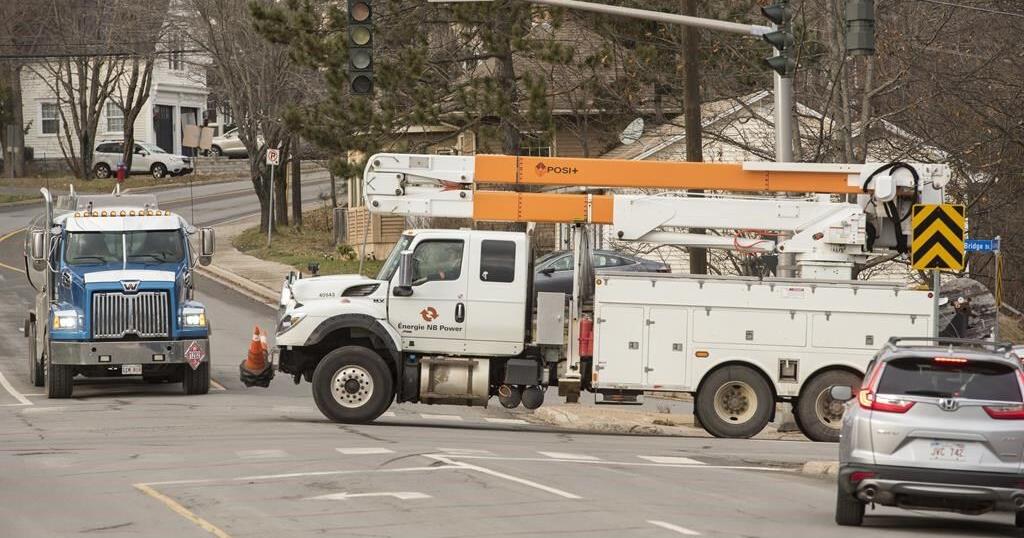FREDERICTON – The skies can be clear and the winds light when suddenly the power goes out in New Brunswick homes and businesses.
At a rate-increase hearing last month, a utility official pointed a finger at unexpected culprits for these “blue sky” outages: soaring raptors and bushy-tailed squirrels.
Phil Landry, executive director of the project management office and engineering for NB Power, said wildlife is to blame for some blackouts, including one on July 12 that left about 26,000 customers in Fredericton and 16,000 in Saint John, in the dark for several hours.
“Osprey, squirrels get into our systems,” Landry told the committee on July 19 when questioned about it. “And we do have what we would call deterrents that we use in those areas that are problematic …. We’re doing a lot about it. Osprey this year have been plentiful. More than we’ve seen in the past. So that’s one thing.”
Yamille del Valle, a scientist with the Electric Power Research Institute in California, said it is not uncommon for birds and animals to get into electrical equipment. A lone raccoon made contact with a transformer at a transmission station in Toronto in February, knocking out power to about 7,000 customers in the city’s downtown.
Outages in transmission lines can leave small areas without power, but one in a substation can darken entire neighbourhoods, she said. Ospreys and squirrels cause outages in both power lines and substations, del Valle said.
Squirrels can cause outages by scampering across equipment and getting electrocuted, either at the top of a utility pole or inside a transformer.
Nick Lund, a network manager for the conservation group Maine Audubon, said ospreys are attracted to power poles as nesting sites. The fish-eating birds breed across North America and go to the southeastern United States, the Caribbean and Central and South America for the winter.
“Power poles look like the kinds of sturdy trees that can hold the weight of their large nests,” Lund said. “Power poles are inviting — they’re sturdy and offer, usually, a clean view of their surroundings because of the vegetative buffers around most power lines.”
Ospreys see the flat cross pieces on top of the pole and begin laying sticks on top to make a nest, he added. The birds build large nests and return to them year after year. The nests can be three to four metres deep and one to two metres in diameter.
Del Valle said in the process of building nests, the raptors carry “long sticks” that sometimes hit transmission lines or a conductor, creating an arc that causes an outage.
“They are raptors, so going on the top of a power structure that is tall, gives them an advantaged viewpoint where they can perch and look for prey,” she said. The birds, especially fledglings, can also fly into transmission lines, getting electrocuted and causing an outage in the process, she added.
Ospreys were driven to the brink of extinction from hunting and toxic pesticides but have made a remarkable comeback, with the population now hovering around 500,000. They are a protected species.
Lund said one of the best solutions to help these birds and keep the power on is to have dedicated nest platforms nearby, or leave more natural trees for them to build homes.
Del Valle agreed. Utility companies may be able to help ospreys by building artificial structures or platforms where the raptors can build their nests, she said. A tray can be attached to the underside of the nest to catch stray sticks, she added.
Sometimes, del Valle said, osprey droppings make contact between two conductors of a transmission line, creating an arc that produces an outage. Droppings of smaller birds can also contaminate lines to the point where the insulation becomes ineffective, causing power outages, she said.
NB Power did not make anyone available for an interview. Spokeswoman Dominique Couture said by email that outages caused by animals are tracked internally, but she did not provide figures for how frequent they are.
A 2020 report by the trade association Electricity Canada blamed 26 per cent of outages on factors that were unknown or outside the utility’s control, including animals, balloons, vehicles and downed trees or vegetation. The group said that nationally, squirrels were the biggest problem, causing about 75 per cent of animal outages, followed by raccoons and birds.
Couture said that over the past five years the utility has taken steps to protect its network, including installing animal guards on equipment, removing inactive osprey nests from transmission structures and trimming active nests to prevent sticks from making contact with conductors. The utility has also installed platforms away from transmission structures in areas known to be frequented by birds to encourage raptors to nest there, she added.
There is no “one-size-fits-all solution,” to deal with outages caused by animals, del Valle said.
But “there is value” in taking time to analyze the problem, including how many birds frequent the area, their favourite nesting sites, and food sources, she added.
“Animals are very intelligent, more so than what sometimes people give them credit for, and they adapt. Their instinct is to survive. They are very determined. They learn. So that’s why it’s very hard to prevent all the outages” she said. “Having all that knowledge enables us to find solutions that are going to be more effective.”
This report by The Canadian Press was first published Aug. 12, 2024.

























